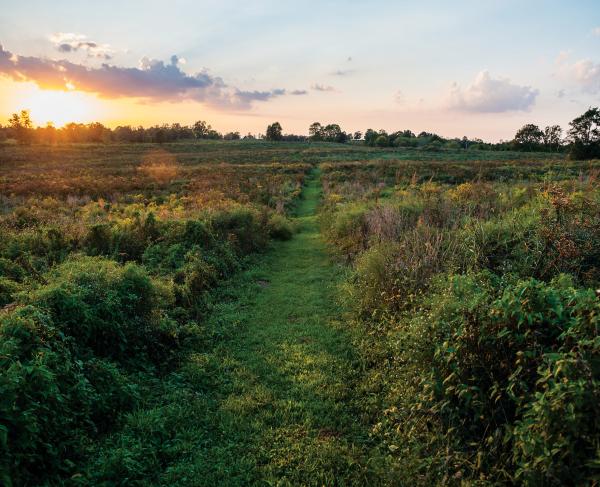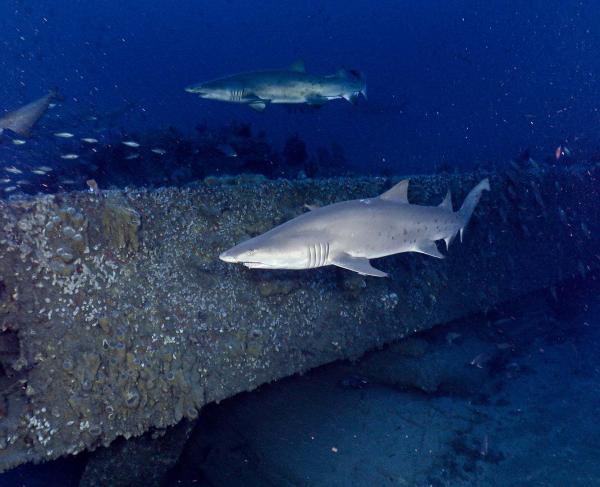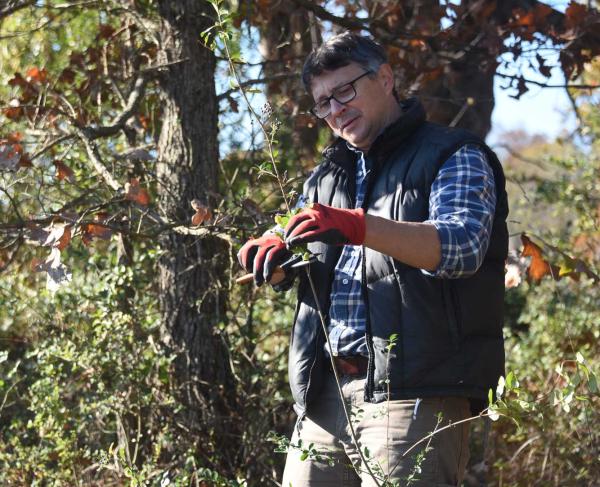Lone Star Leadership
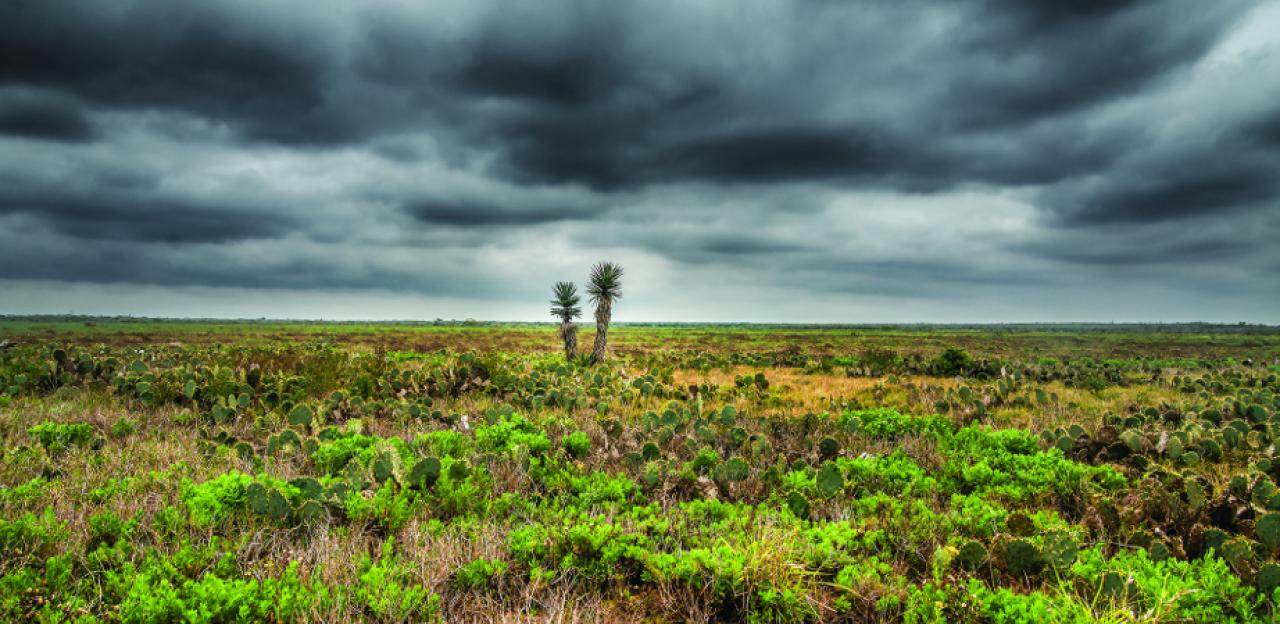
By William A. McWhorter; Hallowed Ground Magazine, Winter 2009
Standing on historic ground and hearing the stories of those who came before them puts people in a perfect frame of mind to consider their cultural heritage and the importance of preserving it for future generations. Although Texas possesses no Gettysburgs or Antietams, it is the home of two Civil War battlefields that tell outstanding stories of Texas’s and the Confederacy’s international historical record. With the sesquicentennial of the Civil War fast approaching, the Texas Historical Commission (THC), bolstered by local and national preservationist partners and multiple grants, is hard at work to improve the interpretation and preservation of two Civil War battlefields — Palmito Ranch Battlefield and Sabine Pass Battleground.
Early in the Civil War, the Trans-Mississippi Department learned to rely on Texas ports as an outlet for European cotton sales and the import of essential supplies. Mexico assisted the Confederate smuggling effort, and border towns prospered. Protection of Texas ports and borders was of utmost concern to Confederate forces in the state. Although the Union had gained control of much of the Texas coast by January 1864, the occupation proved only temporary. In the summer of 1864, Union troops began to withdraw from the Texas coast to focus more attention on campaigns in the East. What Union forces remained were limited to coastal defenses in support of blockading measures, including those on the northern tip of Brazos Island at Brazos Santiago Depot, with its proximity to Fort Brown. From this post, Union forces marched toward Brownsville in May 1865, resulting in armed conflict more than one month after Robert E. Lee’s surrender of the Army of Northern Virginia at Appomattox Court House. In this last engagement, primarily in defense of the Southern economy, Texans won the battle and laid claim to the last land victory of the Civil War.
Palmito Ranch Battlefield

Palmito Ranch Battlefield National Historic Landmark (NHL), between Brownsville and Brazos Santiago in Cameron County, Texas, is the site of that last Civil War battle. The history of the battle uniquely represents the crucial role of the Lower Rio Grande Valley in the Confederacy’s pursuit of international recognition and economic viability during the Civil War. The battlefield’s strategic position at the mouth of the Rio Grande represents the South’s only international border. Although the battlefield was extensively documented in a 1997 National Historic Landmark nomination, there is still some uncertainty about the exact locations of several strategic positions of the Battle of Palmito Ranch.
Following the 1997 NHL nomination, local preservationists — hoping to add to the written scholarship on the battlefield’s history and confirming its boundaries — produced a series of reports, including a 1999 Battlefield Core Area Identification Report and a 2001 Cultural Resource Research, Identification and Documentation National Park Service Resource Reconnaissance Survey. These extensive reports have provided historians and preservationists with valuable information on the locations of significant sites of action during the two-day battle.
The new information gleaned from these reports played a role in CWPT’s 2001 decision to support local preservationists by purchasing three acres of hallowed ground within the boundaries of the NHL at the core battlefield area. At the time there was discussion of potential legislation to authorize the National Park Service to allow nearby Palo Alto Battlefield National Historical Park (then National Historic Site) — a Mexican-American War site — to establish a unit at Palmito Ranch and provide interpretation and visitor services. Although this initiative did not materialize, CWPT has continued to be instrumental in assisting the THC and local historic preservation groups with efforts to protect the neglected battlefield. The site’s major topographical features remain intact and retain exceptional integrity almost 145 years after the battle.
Unfortunately, this nationally significant site is still threatened by a lack of public awareness and access, as well as vandalism to the only on-site reference to the battle, an official Texas Historical Marker. In April 2008 the Military History Sites Program of the THC recognized the threats to this site and conducted simultaneous Park Day maintenance events at Palmito Ranch Battlefield and Sabine Pass Battleground. In both cases, local volunteers embraced the concept of Park Day, the annual hands-on preservation event created by CWPT and underwritten by History (formerly The History Channel) to assist local groups with the clean-up of Civil War sites. The events were so well received that the THC decided to make Park Day an annual event at both battlefields.
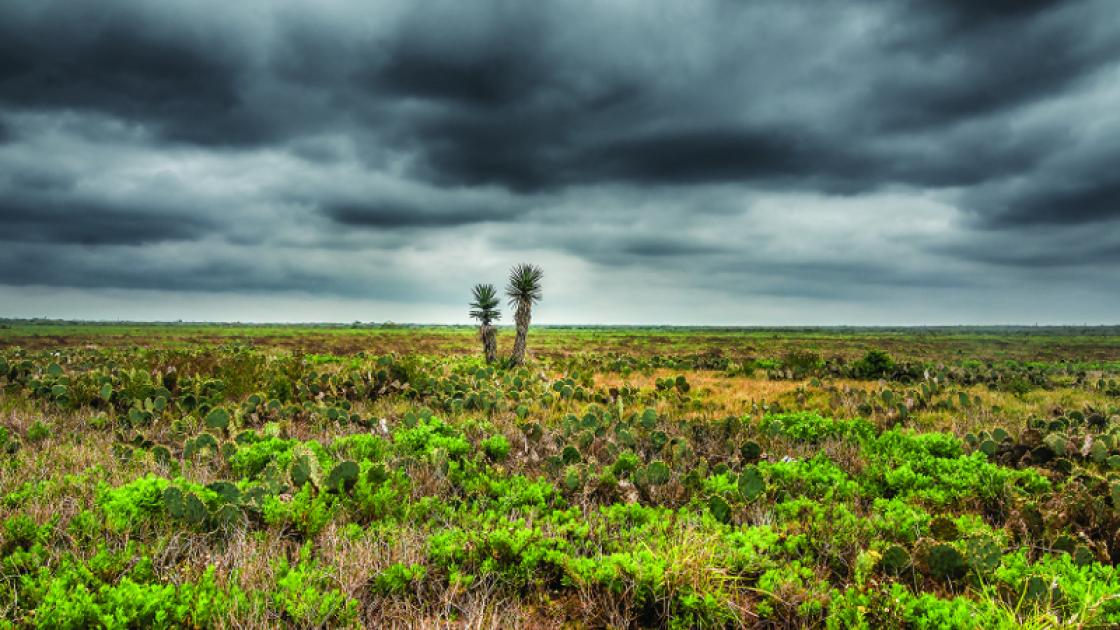
Park Day at Palmito Ranch Battlefield has since spurred a number of preservation activities by the Military Sites Program of the THC toward increasing interpretation of this endangered battlefield. Since 2008, the THC has steadily built a network of regional and national partners that now includes CWPT, the U.S. Fish and Wildlife Service, Palo Alto Battlefield National Historical Park, the Brownsville Historical Association, the Cameron County Historical Commission and the South Padre Island Historical Foundation. The largest project the THC has initiated regarding Palmito Ranch Battlefield was made possible by a generous 2009 preservation grant from the National Park Service’s American Battlefield Protection Program (ABPP), which promotes the preservation of significant historic battlefields associated with wars on American soil. The ABPP had previously funded the 2001 Cultural Resource Research, Identification and Documentation National Park Service Resource Reconnaissance Survey for Palmito Ranch.
Although identified as a potentially resource-rich location in previous reports, no onsite archeological or survey work has yet been conducted on Palmito Hill itself. The 2009 ABPP grant will provide funding to the THC to conduct a non-invasive archeological survey on Palmito Hill in hopes of determining if the site may have hosted the advance or retreat of Union troops during the battle. The THC’s Archaeology Division with volunteer support from the National Park Service’s nearby Palo Alto Battlefield National Historical Park will supervise a basic magnetometer survey for the mapping of three acres. Set to begin in early 2010, the non-invasive reconnaissance survey will ideally ascertain a portion of the hill’s archeological integrity and potential to tell more of the battle’s story.
In an effort to accomplish the remaining objectives of the ABPP grant — engaging a larger, more diverse audience in the battlefield and promoting its unique international Civil War history in hopes of encouraging heritage tourism and preservation of the site — the Military History Sites Program of the THC has begun facilitating public meetings in Cameron County to build an engaged constituency for the battlefield. The first of four meetings took place in September 2009 in Brownsville.
Palmito Ranch is capable of telling a far more encompassing story of the Confederacy’s cotton trade and the crucial role Texas played in the South’s pursuit of international recognition and economic viability than has been written. To that point, the third grant objective, the production of 50,000 heritage tourism travel brochures, is expected to inform the public about the site and generate greater regional support for its preservation and enhancement as the country nears the sesquicentennial observances of the Civil War.
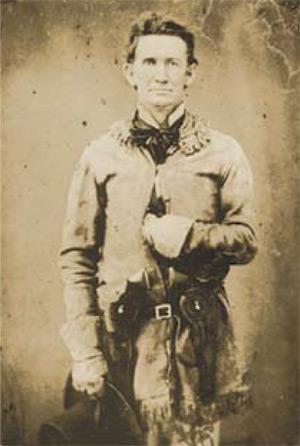
In addition to the support from CWPT through Park Day initiatives and the purchase of core battlefield land and the National Park Service’s ABPP grant, the Society of the Order of the Southern Cross has donated funds for historical research related to the Battle of Palmito Ranch. This generous grant has provided funding for the Military Sites Program of the THC and a contract historian to conduct primary document research at the Nita Stewart Haley Memorial Library in Midland, Texas. The library is the repository for the Texas Division of the United Daughters of the Confederacy’s special collection on Col. John Salmon “Rip” Ford titled, “Inventory of the Ford Expeditionary Forces Records from the Texas Confederate Museum Collection.” Research in the collection has already produced many interesting details about the Texan, Union and Mexican forces in the area prior to the battle, as well as new knowledge regarding skirmishes at Palmito Ranch prior to the May 1865 battle. Especially exciting is how these primary documents have provided insight into the battle’s historical context when viewed through the K.O.C.O.A. Military Terrain Analysis process. Initially developed by the U.S. military, the practice has been adopted by the National Park Service, for evaluating the military significance of the terrain. By accessing “key terrain, observation and fields of fire, cover and concealment, and avenues of approach” the procedure encourages battlefield surveyors to view the terrain through the soldiers’ eyes. Although this analysis is not yet complete, the THC looks forward to completing its report and determining if the battlefield’s historical footprint can in fact be updated.
Sabine Pass Battleground
On January 1, 2008, the 58-acre Sabine Pass Battleground State Historic Site and 17 other historic sites across Texas were transferred from the Texas Parks and Wildlife Department to the THC for management and rehabilitation. Following this significant sites transfer, in February 2009, Texas history lovers founded the Friends of Sabine Pass Battleground to further support rehabilitation and interpretation of the Sabine Pass Battleground State Historic Site in Jefferson County. And thanks to a State of Texas bond issue, funding has been provided to improve the site’s historic interpretation and facilities. The Civil War Sites Advisory Commission classified Sabine Pass as a Priority II, Class B battlefield.
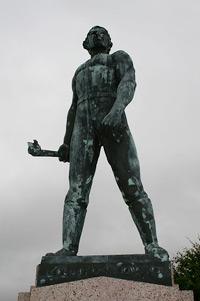
Sabine Pass Battleground State Historic Site highlights the September 8, 1863, story of Confederate Lt. Richard “Dick” Dowling and his 46 men who thwarted an attempted Union attack on Sabine Pass, a primary Texas port for Confederate supplies vital to the war effort. To prevent a viable, Confederate trade route through Mexico, President Abraham Lincoln sent a force to capture Sabine Pass, near the Louisiana border, and begin the occupation of Texas. The only Confederate line of defense was a few dozen artillerists manning six cannons inside Fort Griffin. In a battle lasting less than an hour, Dowling and his men destroyed two gunboats, inflicted significant casualties and captured nearly 350 prisoners. The successful defense by the outnumbered Texan defenders was one of the most lopsided victories of the entire war. Thanks to their efforts, area ports escaped capture and Union forces failed to penetrate the Texas interior.
In April 2008, the THC’s Historic Sites Division and Military Sites Program conducted the first-ever Park Day at Sabine Pass Battleground (See Photos »). CWPT’s support of the battlefield turned out a large group of preservationists. The April 2008 activities included a historical marker cleaning workshop and a public speaking event that highlighted the site’s significance. Hurricane Ike, making landfall in November 2008, caused significant damage to the entire region, keeping the site closed until September 2009. As a result, CWPT helped bring national attention to the site by placing Sabine Pass Battleground State Historic Site in its report History Under Siege: A Guide to America’s Most Endangered Civil War Battlefields. Since its reopening, the public has again embraced the site.
The THC is committed to the concept of heritage tourism and believes in its financial and preservation values. Working with CWPT and local preservation partners at Sabine Pass and Palmito Ranch, all involved parties hope to ensure the sites’ preservation for future generations to remember the important role Texas played during a seminal event in our nation’s history, the American Civil War.
Related Battles
117
6
230
0
